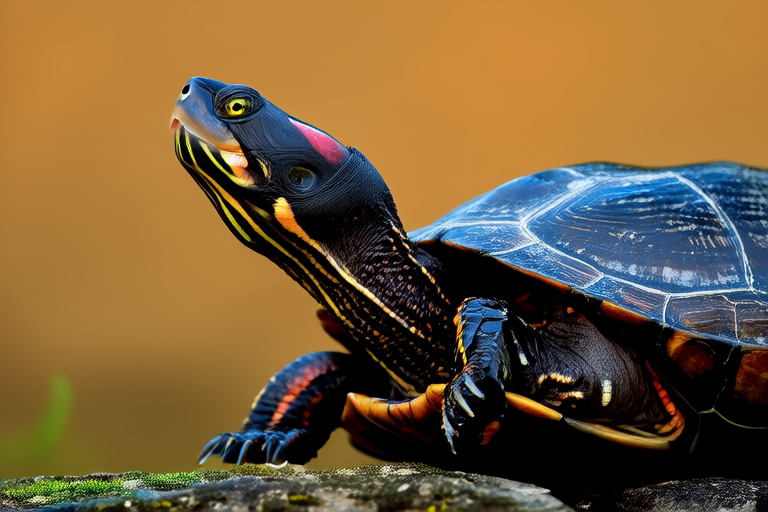Behind the Shell: Fun Facts About Red-eared Sliders You Need to Know
The red-eared slider (Trachemys scripta elegans) is one of the most popular pet turtle species in the world. These semi-aquatic turtles have captured the hearts of many with their charming appearance and relatively low maintenance care requirements. However, there is much more to these creatures than meets the eye. From their natural habitats to their unique behaviors, red-eared sliders offer a wealth of fascinating information that makes them more than just pets but also ambassadors of aquatic ecosystems.
Habitat: A Home in Freshwater
Red-eared sliders originate from the central United States, particularly in regions around the Mississippi River drainage basin. They thrive in freshwater environments such as ponds, lakes, and slow-moving rivers. These turtles prefer areas with abundant vegetation and basking spots, which they use to regulate their body temperature through thermoregulation.
Scientific studies have shown that red-eared sliders are highly adaptable to different environmental conditions. This adaptability has contributed to their successful establishment in various parts of the world where they were introduced or escaped from captivity. In some regions, they have even become invasive species, outcompeting native turtle populations for resources.
Diet: Omnivores with a Preference
Red-eared sliders are omnivorous, meaning they eat both plant and animal matter. Their diet typically consists of aquatic plants, insects, small fish, and snails. Juvenile red-eared sliders tend to be more carnivorous, while adults shift towards a more herbivorous diet as they grow older.
Owners of red-eared sliders should provide a balanced diet that mimics their natural feeding habits. Pellets designed specifically for aquatic turtles can form the base of their diet, supplemented with fresh vegetables like leafy greens and occasional protein sources such as earthworms or freeze-dried shrimp. It’s important to note that overfeeding can lead to health issues, so portion control is essential.
Behavior: Basking Buddies
One of the most recognizable behaviors of red-eared sliders is their tendency to bask. After spending time in the water, these turtles will climb onto logs, rocks, or other elevated surfaces to soak up the sun. Basking serves multiple purposes: it helps them digest food better, regulates their metabolism, and allows them to dry off completely.
Interestingly, red-eared sliders exhibit social behaviors too. They can live harmoniously with others of their kind when provided with adequate space. However, overcrowding can lead to stress and aggression, so it’s crucial to maintain proper tank sizes and densities if keeping multiple turtles together.
Lifespan: Living Long and Prosperous Lives
With proper care, red-eared sliders can live for several decades. The average lifespan ranges between 20 to 40 years, though some individuals have been known to exceed this range. Factors influencing longevity include genetics, diet, and environmental conditions.
Research indicates that captive-bred red-eared sliders often enjoy longer lives compared to those found in the wild due to controlled environments and consistent access to nutritious food. Ensuring optimal living conditions is key to extending the life expectancy of your pet turtle.
Unique Characteristics: More Than Meets the Eye
Red-eared sliders possess several distinctive features that set them apart from other turtle species. One notable characteristic is the red stripe behind each eye, which gives them their common name. Additionally, their shells display intricate patterns of yellow and brown markings.
Another remarkable aspect of red-eared sliders is their ability to survive harsh winters through brumation—a process similar to hibernation but adapted for cold-blooded animals. During brumation, these turtles bury themselves in mud at the bottom of bodies of water, slowing down their metabolic rates significantly.
Care Requirements: Tips for Future Owners
If you’re considering adopting a red-eared slider, understanding its specific needs is crucial for ensuring its well-being. Here are some guidelines to help you create an ideal environment:
- Tank Size: A juvenile red-eared slider requires approximately 10 gallons of water per inch of shell length. As they grow, so does their need for space; adult sliders may require tanks upwards of 100 gallons.
- Water Quality: Maintaining clean water is vital for preventing diseases. Equip your tank with a powerful filtration system capable of handling large volumes of water efficiently.
- Basking Area: Provide a dry area where your turtle can rest out of the water. This spot should be easily accessible and warm enough for effective basking.
- Temperature Control: Maintain temperatures between 75°F and 85°F in the water and around 90°F under the basking light. Use submersible heaters and UVB lights to achieve these conditions.
- Health Monitoring: Regular veterinary check-ups are recommended to catch any potential health issues early on. Pay attention to signs of illness such as lethargy, loss of appetite, or abnormal discharges.
By adhering to these recommendations, you’ll be able to provide your red-eared slider with a comfortable home that promotes good health and happiness.
Conclusion: Celebrating Our Shelled Friends
Red-eared sliders are not only beloved pets but also fascinating creatures deserving respect and admiration. Their ability to adapt to diverse environments, coupled with intriguing behaviors and physical attributes, makes them stand out among other reptiles.
Whether you’re an experienced herpetologist or simply curious about these amazing animals, learning about red-eared sliders offers valuable insights into the wonders of nature. By understanding their origins, dietary preferences, behavioral traits, and care requirements, we can better appreciate the role they play within ecosystems and enhance our interactions with these captivating reptiles.
